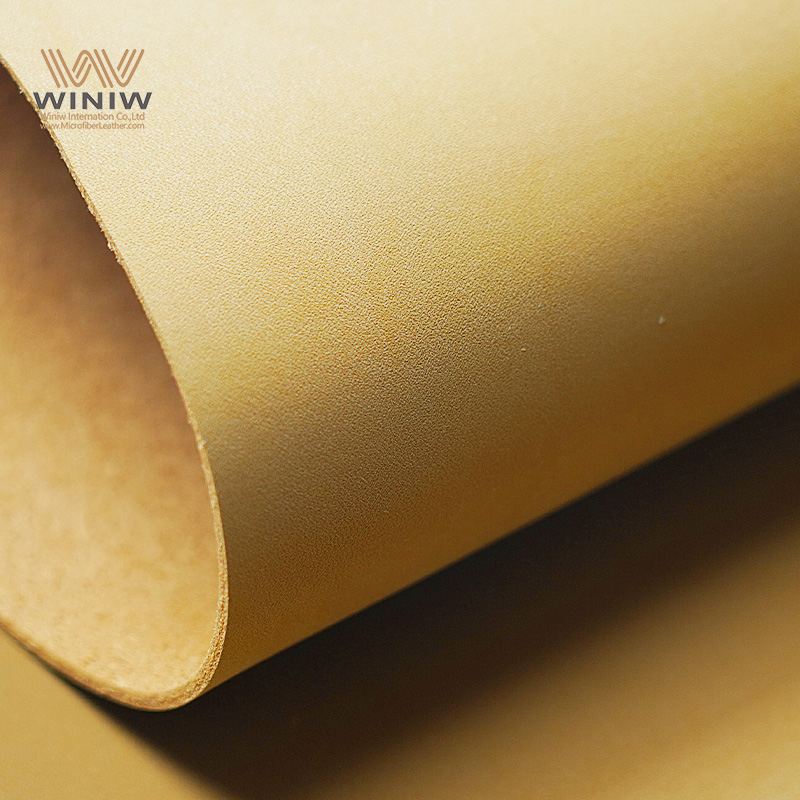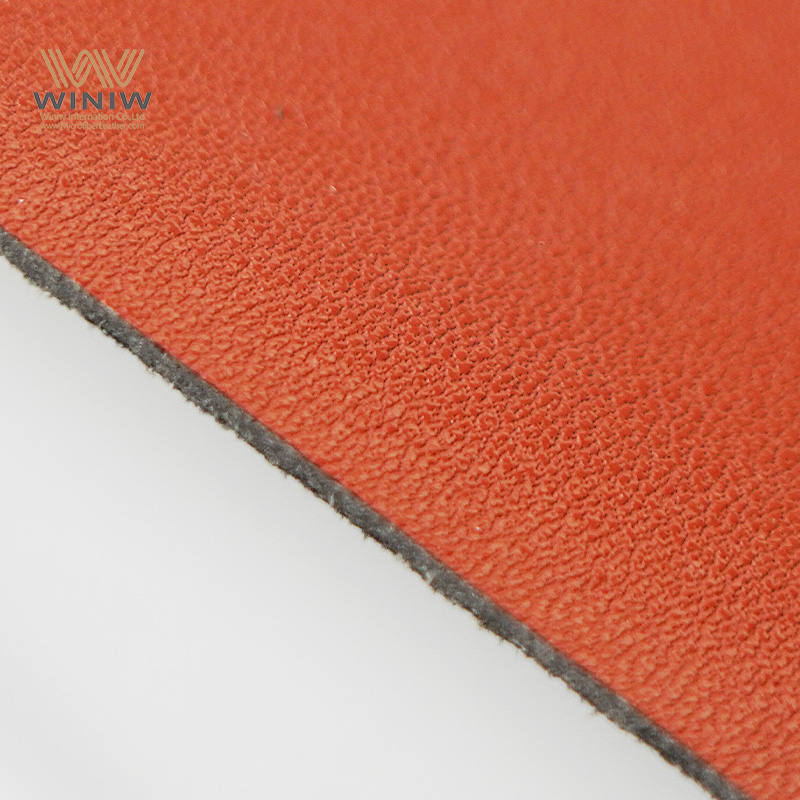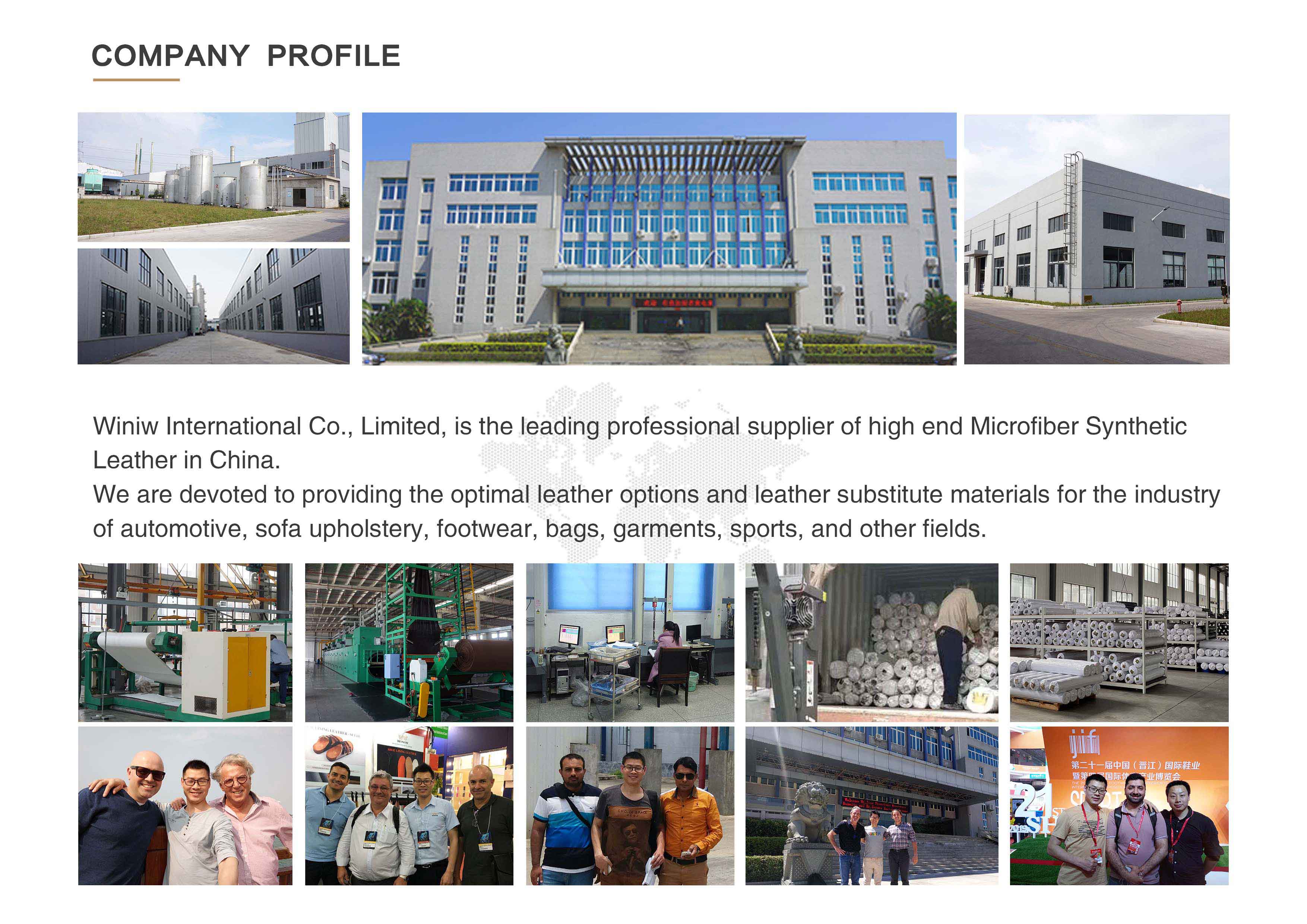-
Tel : +8618150976625
-
Email : Hello@MicrofiberLeather.com
Tel : +8618150976625
Email : Hello@MicrofiberLeather.com


I always start any waterproof project with meticulous surface preparation. Cleaning every surface and repairing each crack ensures polyurethane waterproof coatings bond well and deliver long-lasting protection. Selecting the right product matters. I recommend single-component PU waterproof options for their lightweight construction, flexibility, and suitability for outdoor waterproofing. Here is a quick comparison:
|
Benefit |
Description |
|---|---|
|
Lightweight construction |
Single-component PU products are lighter, making them suitable for outdoor activities. |
|
Flexibility |
These products maintain flexibility, enhancing comfort and usability. |
|
Ideal for outdoor activities |
The combination of lightweight and stretchy properties makes them perfect for outdoor gear. |
Polyurethane waterproof coatings form a reliable membrane that shields your roof and all exposed surfaces. Proper application of these coatings guarantees long-lasting protection.
Start every waterproofing project with thorough surface preparation. Clean and repair surfaces to ensure coatings bond effectively.
Choose single-component PU waterproof coatings for ease of use and reliable protection. They require no mixing and are ideal for most outdoor applications.
Follow a step-by-step application process. Inspect, clean, repair, and apply coatings in a zigzag pattern for full coverage and strong adhesion.
Allow proper curing time for coatings. This step is crucial for achieving maximum waterproofing performance and durability.
Regularly inspect and maintain waterproof coatings. Schedule checks every few months to catch and repair any damage early.
I always begin any waterproof project by cleaning the roof thoroughly. Proper cleaning and drying set the foundation for successful polyurethane waterproof coatings. I follow industry-recommended steps to prepare every surface for long-lasting protection. Here is my process:
I clean the surface by removing dust, loose concrete, oil, grease, paint, or weak material. I use a wire brush or mechanical tools for stubborn debris.
I check the substrate to ensure it is solid and roughened. This step helps polyurethane waterproof coatings bond well and form a reliable membrane.
I pre-wet the surface with clean water until it reaches a saturated surface dry condition. The surface should feel moist but not have standing water.
This method ensures that polyurethane coatings adhere properly and deliver waterproof results. I never skip these steps because poor preparation can lead to coating failure and loss of protection.
Repairing the surface is essential before applying any polyurethane waterproof coatings. I inspect every crack and widen them if necessary to allow for effective repair. I select materials based on recent studies to maximize waterproofing and durability. Here is a comparison of popular crack repair materials:
|
Material Type |
Key Benefits |
Drawbacks |
|---|---|---|
|
OPC-CSA-anhydrite cementitious system |
Improved mechanical properties, better volume stability |
High pore connectivity, risk of initial cracking |
|
Organic polymer emulsion |
Enhances waterproofing, fills internal pores |
Can reduce compressive strength |
|
PTB emulsion |
Increases flexural strength, bonding performance, and impermeability |
Reduces compressive strength |
I prefer organic polymer emulsion for most repairs because it enhances waterproofing and fills internal pores. I apply the chosen material carefully, making sure the crack is fully sealed. This step prevents water from penetrating the membrane and ensures the coatings provide long-lasting protection.
I always emphasize that cleaning the roof and repairing the surface are the most important steps in any polyurethane waterproof application. These actions guarantee that the coatings deliver reliable waterproof protection for every roof and exposed area.

When I select polyurethane waterproof coatings, I always consider whether a single-component or multi-component product fits the project. Single-component PU waterproof coatings offer clear advantages. I find them easy to use because they do not require mixing. This feature reduces the risk of mistakes during application. These coatings also improve safety on the job site. I can open the container and apply the product directly to the surface. Multi-component coatings, on the other hand, often need precise mixing and timing. I reserve these for specialized waterproof projects where extra durability is necessary. For most roof and surface waterproofing, single-component PU coatings provide reliable protection and long-lasting protection.
Bathrooms need a waterproof solution that works well in wet environments. I often choose waterborne polyurethane waterproof coatings for these projects. These coatings deliver several benefits that make them ideal for bathroom waterproofing:
|
Benefit |
Description |
|---|---|
|
Easy to work with |
Waterborne PU coatings are user-friendly, making application straightforward. |
|
Dries quickly |
Typically dries within two hours, allowing for faster project completion. |
|
Low odor |
Produces minimal odor during application, improving indoor air quality. |
|
Clear finish |
Provides a clear finish that does not yellow over time, maintaining aesthetics. |
|
Water cleanup |
Easily cleaned up with water, simplifying the post-application process. |
I appreciate how these coatings dry quickly and leave a clear finish. The low odor improves comfort during application. Cleanup with water saves time and effort. I always recommend waterborne polyurethane for bathroom waterproofing because it delivers a strong waterproof membrane and keeps the space looking clean.
For projects that need a flexible and seamless waterproof layer, I use PU liquid rubber membranes. These polyurethane waterproof coatings create a continuous membrane that adapts to the shape of the roof or any surface. I apply them with a roller or brush, making sure to cover every corner and edge. The result is a tough, elastic waterproof barrier that resists cracking and peeling. I trust PU liquid rubber for areas exposed to heavy rain or standing water. It provides excellent waterproof protection and extends the life of the roof or surface.
Tip: Always match the type of polyurethane waterproof coatings to the specific needs of your project. The right choice ensures effective waterproofing and long-lasting results.
I always start by gathering the right tools and equipment before any polyurethane waterproof coatings project. Using the correct gear ensures the coatings go on smoothly and provide the best results. I rely on high-quality rollers, brushes, and squeegees for even coverage. For larger areas, I use airless spray machines to speed up the process and achieve a uniform finish. I also keep a notched trowel handy for spreading thicker coatings or adhesives. Clean buckets, mixing paddles, and protective gloves help me maintain safety and cleanliness throughout the application. I never overlook personal protective equipment like goggles and masks, especially when working with solvent-based polyurethane. These tools make the installation process efficient and help me deliver long-lasting protection.
When I apply adhesive or the first layer of polyurethane waterproof coatings, I use a zigzag pattern. This technique helps me achieve full coverage and strong bonding. I start at one end of the surface and move the roller or brush in a steady zigzag motion. This method prevents missed spots and ensures the membrane forms a continuous barrier. I find that the zigzag pattern also helps the coatings penetrate small pores and cracks, which increases resistance to water intrusion. For corners and edges, I use a smaller brush to maintain the same pattern and avoid weak points. This approach gives me confidence that the waterproof layer will perform well under stress.
Tip: Always use a zigzag pattern when applying polyurethane waterproof coatings. This simple step improves adhesion and ensures the waterproof membrane covers every inch of the surface.
I follow a step-by-step guide for every waterproof project to guarantee consistent results. Here is my process for applying polyurethane waterproof coatings:
I inspect the roof or surface and confirm it is clean, dry, and free of debris.
I repair any cracks or holes using recommended materials to create a smooth base.
I apply a suitable primer if the manufacturer suggests it. This step improves the bond between the surface and the coatings.
I pour or scoop the polyurethane onto the surface and spread it evenly with a roller, brush, or squeegee.
I use the zigzag pattern to ensure complete coverage and avoid air pockets.
I allow the first coat to cure according to the product instructions. Proper curing is essential for waterproof performance.
I apply a second coat, repeating the same technique for added thickness and durability.
I inspect the finished membrane for any missed spots or thin areas and touch up as needed.
This step-by-step guide helps me achieve a seamless waterproof barrier. I always check the weather forecast before starting, since rain or high humidity can affect the curing process and the final protection.
Achieving the correct thickness is crucial for effective waterproofing. I always follow the manufacturer's guidelines for polyurethane waterproof coatings. Most products require a total dry film thickness of 1.5 to 2 millimeters for optimal waterproof protection. I measure the thickness with a wet film gauge after each coat. Applying too thin a layer can lead to weak spots and reduced resistance to water. Too thick a layer may cause cracking or slow curing. I apply two or three coats, allowing each to dry fully before adding the next. This method ensures the membrane forms a tough, flexible barrier that stands up to weather and wear. Consistent thickness across the entire surface guarantees long-lasting protection and reliable waterproof performance.
Note: Always check the product label for recommended thickness. Following these guidelines ensures the coatings deliver the best results and extend the life of your waterproof installation.

I see many roof waterproofing failures caused by poor surface preparation. When I skip cleaning or ignore prompt repairs, the polyurethane waterproof coatings cannot bond properly. Dirt, dust, and old paint create weak spots that allow water to seep through the membrane. I always make sure the surface is dry and free of contaminants before starting any installation. This step is essential for long-lasting protection and resistance against leaks. If I overlook cracks or holes, water will find its way under the coatings and damage the roof. Careful surface prep guarantees the best results and keeps the waterproof barrier strong.
Tip: Never rush surface preparation. A clean, solid base ensures polyurethane waterproof coatings deliver reliable waterproof protection.
Mistakes during mixing or application can ruin the effectiveness of polyurethane waterproof coatings. I pay close attention to manufacturer instructions and avoid shortcuts. Common errors include:
Not allowing enough drying time between coats, which traps solvents and creates soft spots in the finish.
Applying sealer over contaminated surfaces, leading to poor adhesion and peeling.
Using the wrong mixing ratios, resulting in coatings that never fully cure.
Ignoring temperature requirements, which can compromise the final waterproof result.
I always measure and mix polyurethane products carefully. I check the weather and temperature before starting the application. These steps help me achieve a tough, flexible waterproof membrane that protects the roof and surface.
Weather plays a critical role in roof waterproofing. I never apply polyurethane waterproof coatings during rain, high humidity, or extreme temperatures. Moisture in the air can prevent proper curing and reduce resistance to water. Cold weather slows down the drying process, while heat can cause the coatings to set too quickly. I plan my installation for mild, dry days to ensure the coatings form a seamless waterproof barrier. Monitoring the forecast helps me avoid costly mistakes and ensures long-lasting protection.
Note: Proper timing and attention to weather conditions are key to successful waterproofing. I always wait for the right conditions before starting any polyurethane waterproof coatings project.

I always prioritize proper curing when working with polyurethane waterproof coatings. After applying the polyurethane membrane, I allow the coatings to cure for the full recommended time. This step ensures maximum waterproofing performance and long-term protection. I avoid foot traffic or placing heavy objects on the surface during curing. I monitor the environment to maintain optimal temperature and humidity. Polyurethane flat roof waterproofing requires patience. Rushing the process can compromise waterproofing performance and reduce uv resistance and durability. I often use temporary barriers to shield the membrane from rain or debris. For exterior wall waterproofing and underground waterproofing, I follow similar curing protocols. These actions help the coatings form a seamless waterproof barrier that resists water intrusion and environmental stress.
Tip: Always check the manufacturer’s instructions for curing times. Proper curing guarantees the best waterproofing performance and extends the life of the polyurethane waterproofing membrane.
Regular inspection keeps polyurethane flat roof waterproofing in top condition. I schedule routine checks every few months. I look for signs of wear, blistering, or peeling on the coatings. I pay close attention to corners and joints, where leaks often start. If I find any damage, I repair it immediately to maintain waterproof protection. I clean the surface gently to remove dirt and debris. For exterior wall waterproofing, I inspect vertical surfaces for cracks or discoloration. Underground waterproofing also needs periodic checks for moisture or seepage. I recommend keeping a maintenance log to track repairs and inspections. This habit helps me ensure consistent waterproofing performance and avoid costly damage.
|
Maintenance Task |
Frequency |
Purpose |
|---|---|---|
|
Visual inspection |
Every 3 months |
Detect early signs of damage |
|
Cleaning |
Twice a year |
Remove debris and maintain coatings |
|
Minor repairs |
As needed |
Restore waterproof protection |
I always remind clients that maintaining polyurethane waterproof coatings is essential for long-lasting waterproofing performance. Consistent upkeep preserves the membrane and protects the roof and surface from water damage.
I always achieve the best waterproof results by focusing on preparation, product selection, and careful application. I start with a clean, dry surface and choose polyurethane waterproof coatings that match the project’s needs. I apply each layer with precision to build a strong membrane for lasting protection. Industry experts highlight advanced formulations, automation, and eco-friendly options as key factors for success:
|
Key Factors for Success |
Description |
|---|---|
|
Product Differentiation |
Superior weather resistance and adhesion |
|
Advanced Formulations |
Enhanced performance and durability |
|
Automation Technologies |
Efficient spraying and curing |
Following every step ensures polyurethane waterproof coatings deliver reliable waterproof protection for any roof or surface.
The SANI-TRED system creates a permanent waterproof membrane proven to withstand hydrostatic pressure.
Eco-friendly polyurethane coatings offer improved adhesion and flexibility, meeting modern environmental standards.

I usually allow polyurethane waterproof coatings to cure for 24 to 48 hours. I always check the manufacturer’s instructions for specific curing times. Weather and humidity can affect the process.
I never apply PU waterproof coatings over old paint. I always remove loose or peeling paint and clean the surface thoroughly. This step ensures strong adhesion and long-lasting waterproof protection.
I widen cracks with a chisel and fill them using an organic polymer emulsion. I make sure the repair material cures fully before applying the polyurethane waterproof coating. This method prevents leaks and improves durability.
I measure the wet film thickness with a gauge after each coat. I follow the product label recommendations, usually aiming for 1.5 to 2 millimeters total dry film thickness. Consistent thickness guarantees reliable waterproofing.
I use waterborne polyurethane waterproof coatings for indoor projects. These products have low odor and easy cleanup. I always ventilate the area and wear protective gear to ensure safety during application.